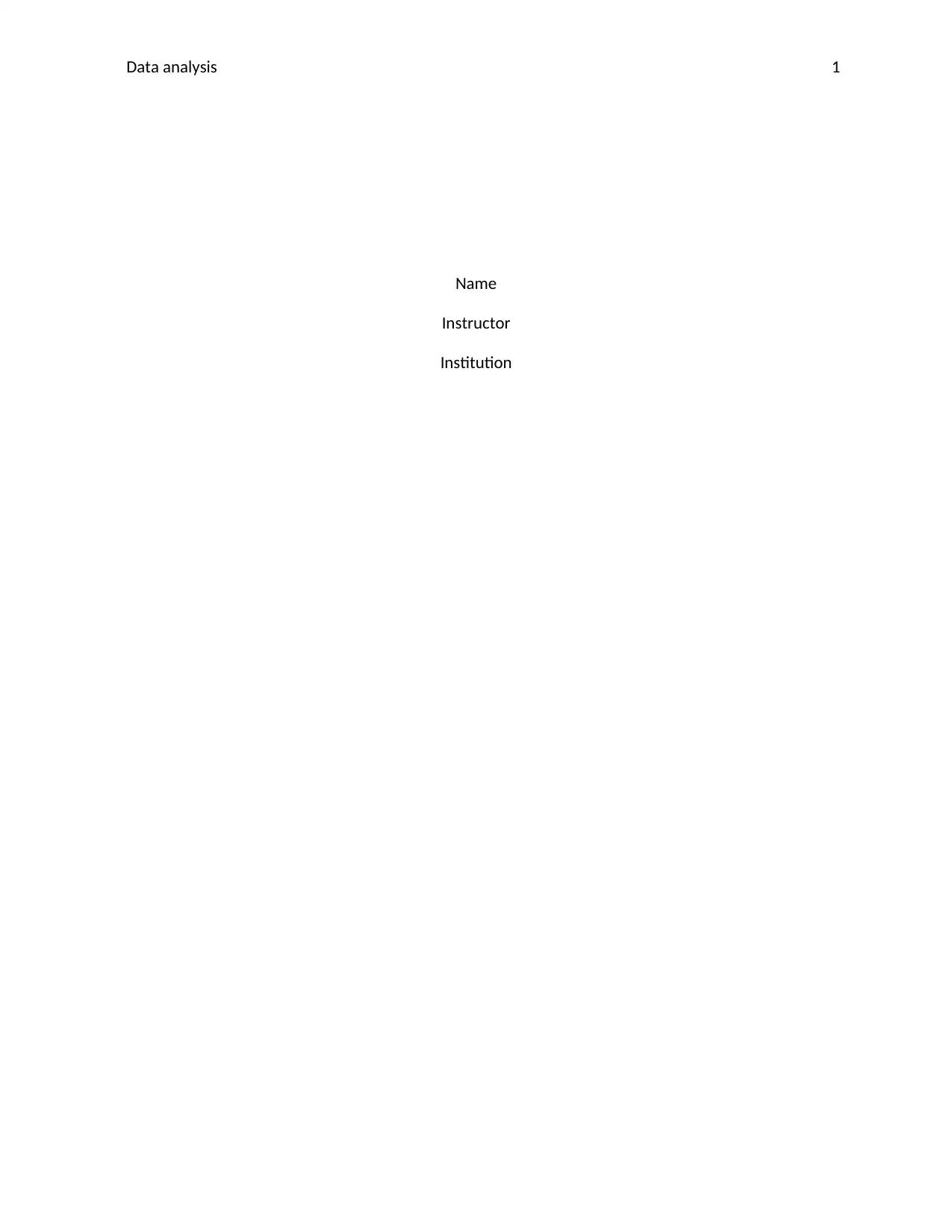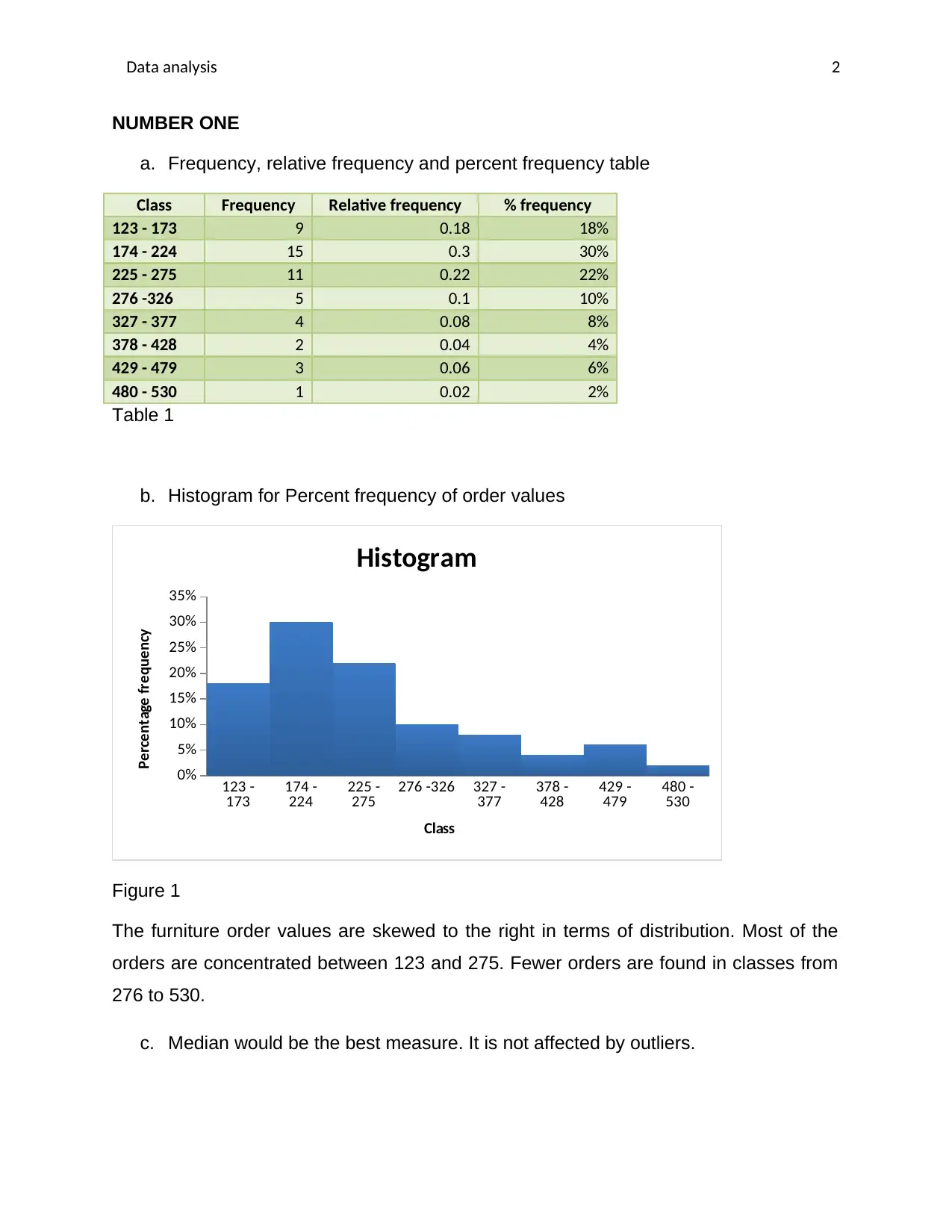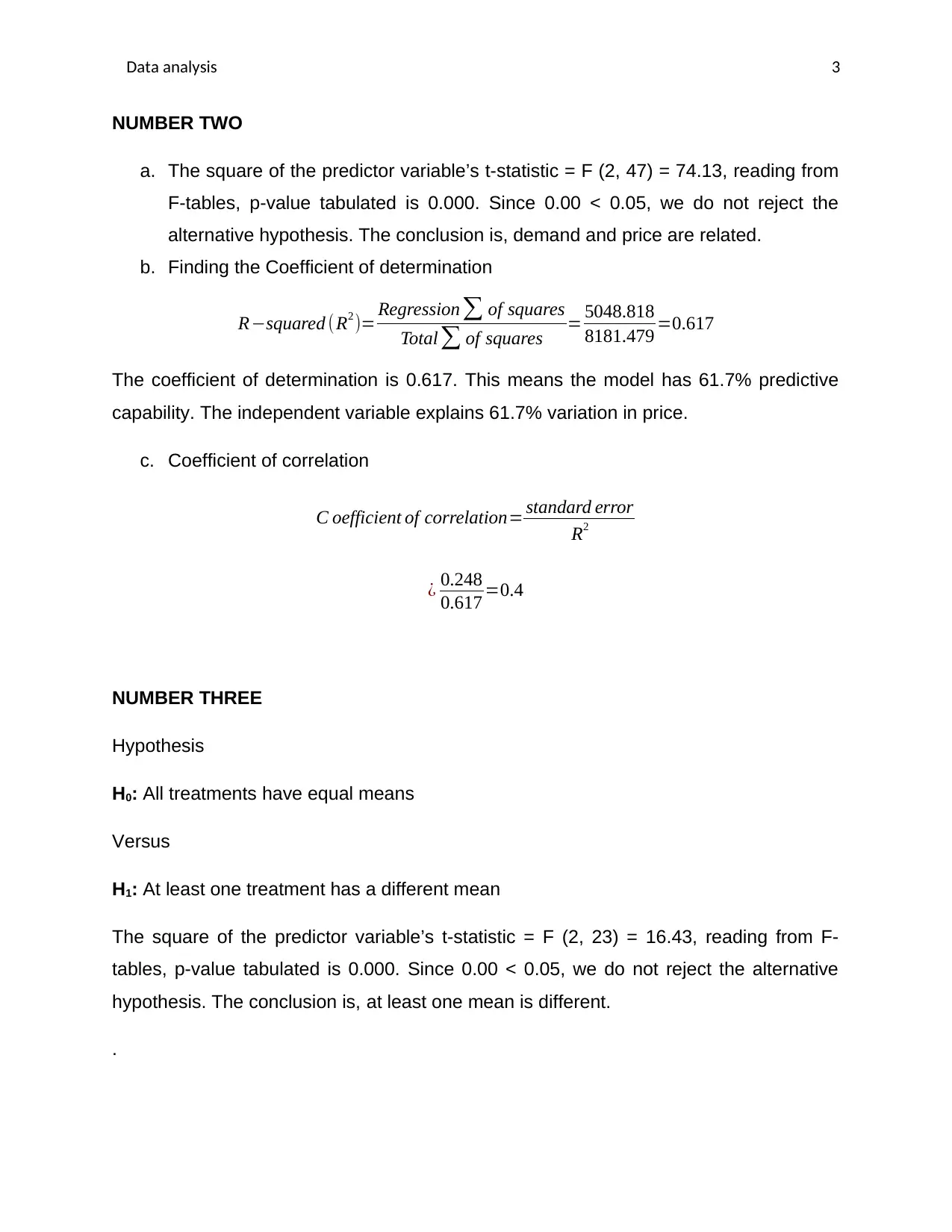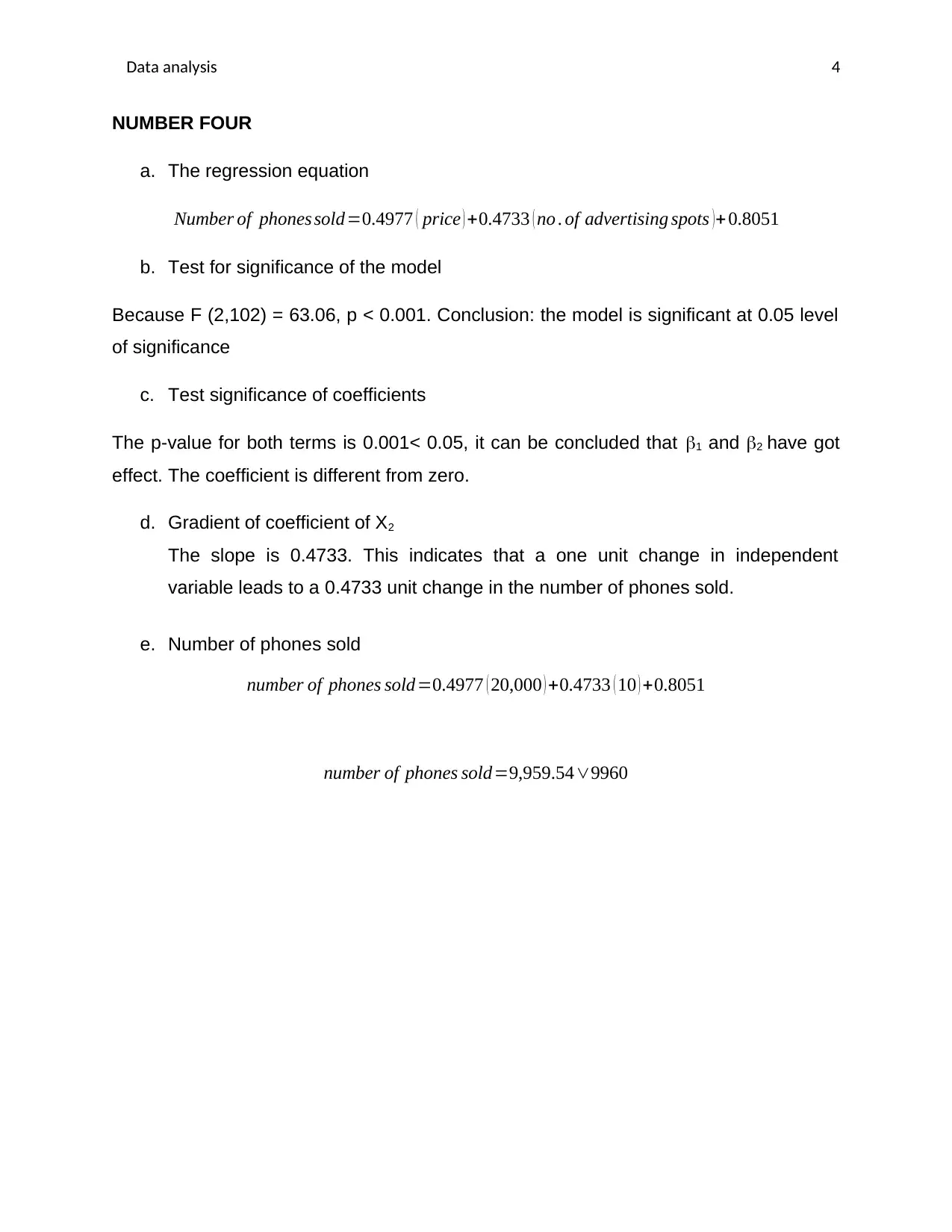Data Analysis: Frequency Distribution, Regression, and Hypothesis Test
VerifiedAdded on 2023/06/12
|4
|527
|497
Homework Assignment
AI Summary
This assignment solution covers several aspects of data analysis. It includes creating a frequency distribution table, relative frequency distribution, and percent frequency distribution for furniture order values, followed by a histogram illustrating the percent frequency. The analysis reveals a right-skewed distribution. The solution also addresses regression analysis, interpreting the coefficient of determination, and conducting hypothesis tests to determine the relationship between demand and price. Furthermore, it provides a regression equation for the number of phones sold based on price and advertising spots, tests the model's significance, and interprets the gradient of coefficients. The document concludes by predicting the number of phones sold given specific price and advertising values. Desklib offers a variety of similar solved assignments and study resources for students.
1 out of 4








![[object Object]](/_next/static/media/star-bottom.7253800d.svg)